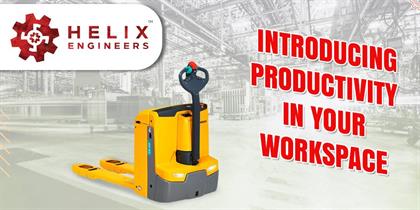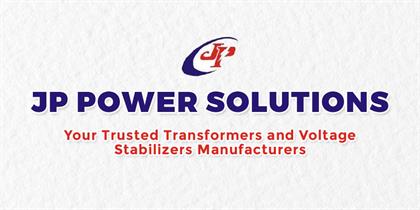
Shri Ram Construction Equipment: Your Building Partner from Ghaziabad to Every Site. Top-quality machinery for efficient construction. Boosting projects with durable, high-performing tools. Smoothing the way for builders nationwide. Read More

Boby Inflatables: Bringing Fun to Life Since 2005
Dive into fun with our featured products! From Mickey Mouse inflatables to bungee trampolines, our collection ensures joy for all ages at events and parties. Make every moment memorable! Read More

Qualityz Packaging Solutions: Redefining Packaging Excellence
Discover the pinnacle of packaging excellence with Qualityz Packaging Solutions. Unveil cutting-edge machinery designed to redefine your packaging process. Explore the comprehensive product range and commitment to quality from this Mumbai-based industry leader. Read More

Aajjo.com has launched Android App which available for download from the Google Play Store. You can now access all the features Aajjo India offers from your mobile device by just installing the app. Check out the app – Aajjo.com from your Play Store and Enjoy! Read More

Refrigeration is nothing but a cooling system to lower and maintain the temperature below the ambient level. Needing refrigeration has come a crucial part of everyone’s life and in fact, they play a vital role in cooling the substances or things we need the most. Read More

Air conditioning, also known as A/C, air conditioner, is the process of controlling the moisture content of air – that is humidity, as well as removing dust in some cases of the air within a vehicle or building to achieve a more contented interior environment Read More
Latest Post

Know Why Small Businesses Recommend Green Volt’s Voltage Stabilizers
Starting its journey in 2021, Green Volt System is well-known in the industry as a manufacturer, seller, and supplier of top-notch Voltage Stabilizers. Read More

Brilliant Pharmaceutical Product, Excellent Services: Shivam Pharma Packtech Private Limited
Explore Shivam Pharma Packtech's range of pharmaceutical packaging machines, including filling, capping, and labeling solutions for small businesses in the growing sector. Read More

Optimal Products, Top-Notch Quality: Udesh Steel Industries
Established in 2010, Udesh Steel Industries specializes in high-quality stainless-steel kitchen equipment for the hospitality, restaurant, and food service industries. Products like SS Planetary Mixer, SS Gas Pizza Oven, and SS Double Burner Cooking Range are famous for blending durability with functionality, all at competitive pricing. Read More

Revolutionary Product, Impeccable Service: Khodiyar Developers and Infrastructure Private Limited
Khodiyar Developers and Infrastructure, established in 2005, is a leading manufacturer of high-quality construction equipment like RMC batching plants and paver machines. Based in Mehsana, Gujarat, they prioritize innovation, quality, and customer satisfaction. Read More

Krishna Electricals – Machinery to Automate Your Business
Krishna Electricals, a leading manufacturer in Delhi, offers advanced CNC and welding machines. Their high-quality, efficient, and versatile equipment ensures precision and durability at affordable prices. Read More

Helix Engineers – Served Indian Army with Top-Class Floor Crane
Helix Engineers proudly serves the Indian Army with top-quality floor cranes known for durability, precision, and safety. Ideal for industries like manufacturing and construction, these versatile cranes offer dynamic lifting capabilities and advanced safety features. Read More
Latest Videos
This section provides the latest or trending videos to help for better acknowledgement.
Trending Post

Divine Laser Technologies, based in Ahmedabad, India, offers top-quality laser marking and engraving machines, including fiber, metal, and handheld models. Known for precision, durability, and excellent customer support, they serve industries like automotive, electronics, and jewelry. Explore their Aajjo store for advanced laser solutions. Read More

Helix Engineers’ Top-Notch Material Handling Systems
Explore premium material handling systems by Helix Engineers – a trusted manufacturer. Durable, efficient solutions like pallet trucks, drum lifters, and more with top-notch support. Read More

Boost productivity and safety with Helix Engineers' high-quality pallet trucks. From hydraulic to battery-operated models, their durable trucks ease heavy lifting and improve efficiency. Trusted since 2015, Helix Engineers offers reliable industrial solutions for warehouses and factories. Visit their store for the best deals. Read More

Helix Engineers – A Maestro in Lifting Equipment Industry
Helix Engineers, based in Ahmedabad, is a top manufacturer of high-quality lifting equipment like hydraulic trolleys, stackers, and conveyors. Offering affordable prices, excellent customer support, and durable machines, they help businesses improve efficiency and reduce costs. Choose Helix Engineers for reliable, innovative machinery. Read More

Aakar Pools – Offering Finest Pools from Decades
Aakar Pools, a top swimming pool manufacturer in Greater Noida, offering custom designs, high-quality materials, and expert craftsmanship. From rooftop to hydrotherapy pools, they deliver luxury and residential solutions tailored to your needs. Contact Aakar Pools for top deals and personalized service today. Read More

Quality Stabilizers on Your Demand – JP Power Solutions
Get high-quality transformers and voltage stabilizers with JP Power Solutions, one of India’s leading manufacturers. Offering durable, energy-efficient products with customized solutions and excellent customer service, they ensure reliable power management for businesses. Read More











